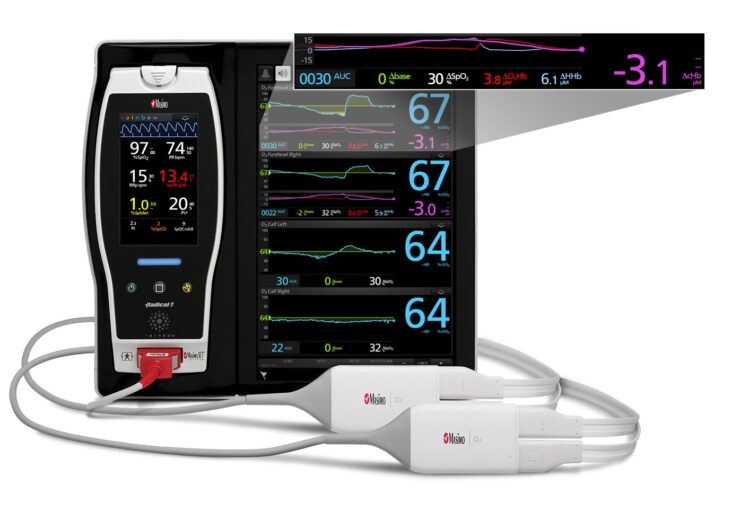The expanded indication to enable clinicians gain insights into the dynamic relationship between oxygen and haemoglobin in the brain

Masimo Root with O3 Regional Oximetry. (Credit: Business Wire.)
Masimo has received FDA approval for its O3 Regional Oximetry device, to monitor somatic tissue oxygenation saturation, along with relative changes in hemoglobin, oxyhemoglobin, and deoxyhemoglobin in adult brains.
The approval enables the indication of O3 for use in both cerebral and somatic applications, both in the US and in CE mark countries, for all patient populations.
Masimo founder and CEO Joe Kiani said: “O3’s expanded indication as a monitor of the oxygenation and deoxygenation components of cerebral tissue, along with the oxygen saturation of somatic tissue, represents an important milestone in helping clinicians and researchers shed additional light on how the body utilizes oxygen and in uncovering organ hypoxemia.”
O3 Regional Oximetry can be integrated with Root Patient Monitoring and Connectivity Platform
O3 Regional Oximetry leverages O3 multi-wavelength sensors and O3 Regional Oximetry near-infrared spectroscopy (NIRS) technology, to deliver regional or tissue hemoglobin oxygen saturation.
Also, O3 differs from the peripheral pulse oximetry, which indicates the general arterial blood oxygenation, by providing information about the local haemoglobin oxygen saturation of the tissue, both in cerebral and somatic applications.
Along with the FDA approval for somatic monitoring, the O3 is approved for the monitoring of relative changes in oxygenated hemoglobin, deoxygenated hemoglobin, and total hemoglobin in adult brains.
The expanded indication is expected to enable clinicians gain insights into the dynamic relationship between oxygen and haemoglobin in the brain, which may not be delivered by brain oxygenation saturation (rSO2) alone.
The Japanese medical devices maker said that its O3 can be easily integrated with Masimo SedLine brain function monitoring on the Root Patient Monitoring and Connectivity Platform.
The Root platform is an expandable hub that integrates different technologies, devices, and systems to offer multimodal monitoring and connectivity solutions.
University Hospitals of Leicester cardiovascular anaesthesiologist Aamer Ahmed said: “When using regional oximetry to monitor the brain, rSO2 helps track the oxygenation state of the brain, but understanding the dynamic variations in rSO2 is even more valuable.
“Changes in rSO2 may be a function of a change in hemoglobin or perfusion, or may result from an oxygen desaturation event. In my practice, I use Masimo O3 ΔcHb, ΔO2Hb, and ΔHHb to gain insight into the relative changes in hemoglobin and perfusion in the brain to help enable earlier detection and intervention during adverse changes to cerebral blood flow.”
